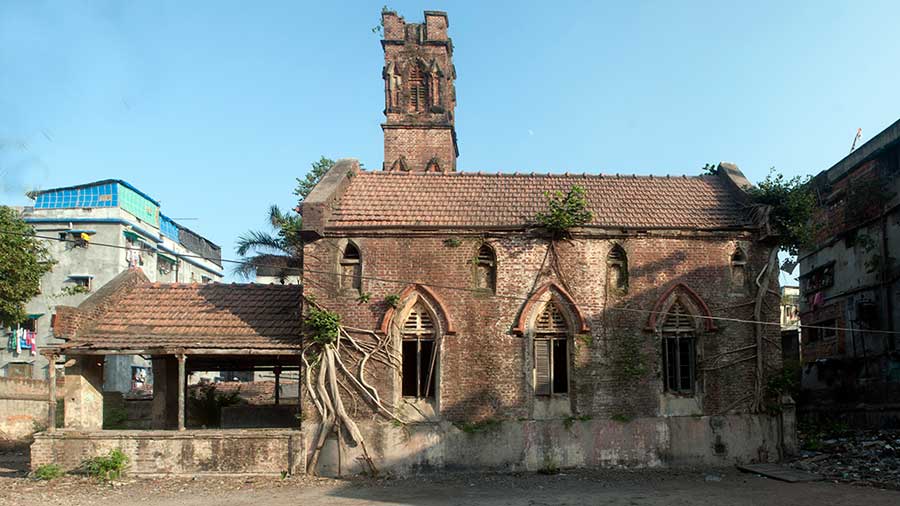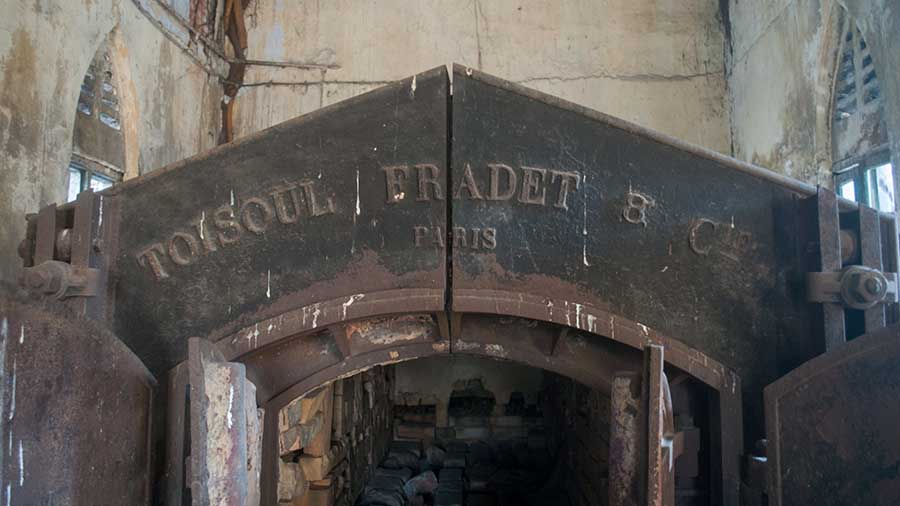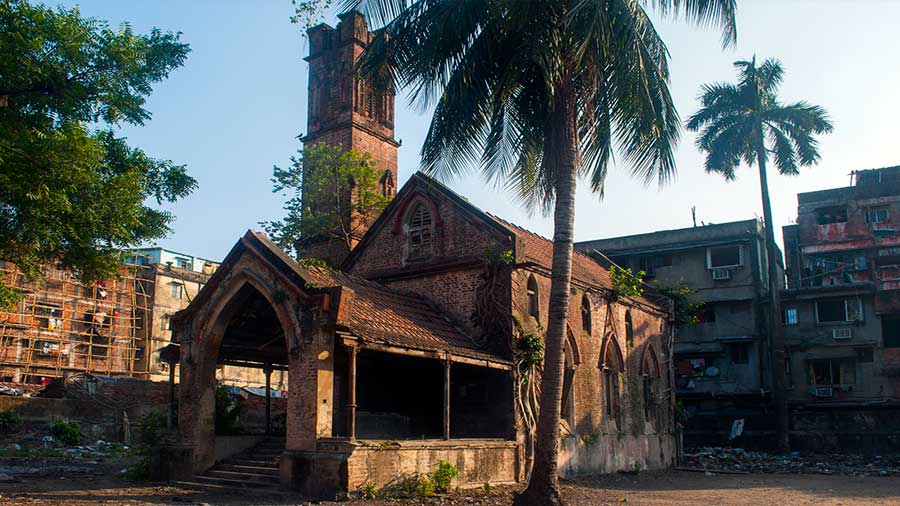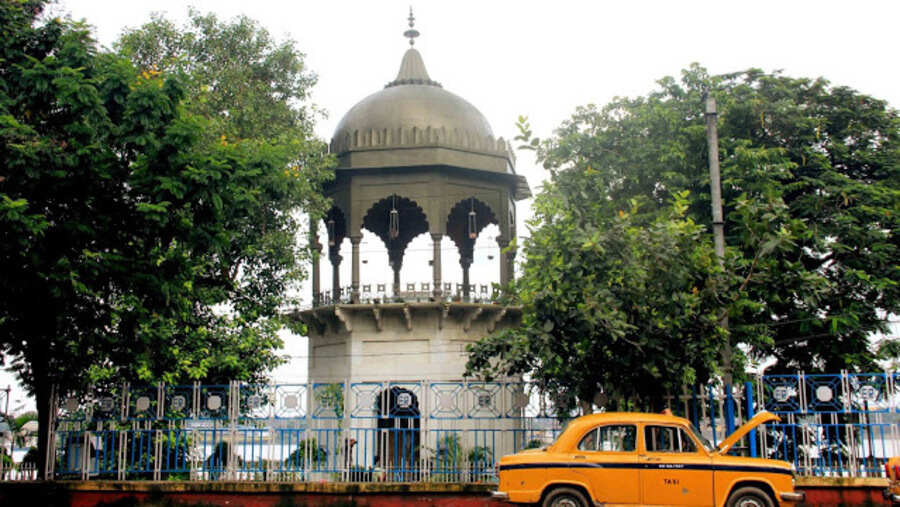At first glance, this abandoned building in the heart of Kolkata appears to be a small church. It has what appears to be a bell tower, red tiled roof and pointed Gothic arches — similar to church buildings in small towns across Europe. However, this building in Park Circus is actually a defunct crematorium. The bell tower-like structure is the chimney of what was once a gas crematorium.
For the last journey home
The crematorium, which dates back to 1906, was actually built for the cremation of Christians and not Hindus as one would normally assume. Many Britishers who came to colonial Calcutta wished to be buried back in their hometowns in England, but transporting corpses was no easy undertaking. The gas-powered crematorium came up as a way to honour last wishes so loved ones could carry the ashes of the deceased back to their homeland.

The pyre and furnace inside the crematorium
It was also used by members of the Brahmo Samaj — who followed an interesting mix of Eastern and Western philosophies — for their last rites. Famous scientist Jagadish Chandra Bose, who died in 1937, was part of the community and cremated at the gas crematorium.
The crematorium was operational until 1978, when the great Kolkata flood damaged the gas supply pipe. It was never repaired after that and today the abandoned building stands in a crowded locality, on the eastern side of the Circular Road Cemetery. The road where the building is located is known as Crematorium Street. A formal permission is needed to enter the building, which is under the Christian Burial Board and is kept locked.

The colonial-era building shows the wear of time
The century-old unused structure wears the signs of time with overgrown vegetation, a lot of which have grown roots into the building’s walls. The structure still looks stable, but trees have claimed parts of it and most of the windows are broken and have missing frames.
The real surprise lies inside. Made by Paris-based furnace makers Toisoul Fradet & Co., the furnace that is still kept inside the crematorium is in fairly good condition, albeit covered with a thick layer of dust.
On close inspection, one can spot several details of the furnace such as the ash release lever and peep holes. Three on each side, the peep holes were used to check the progress of cremation.

The furnace inside was made by the French company Toisoul Fradet & Co.
Given its prime real-estate location, the crematorium is surrounded by buildings that have come up within inches of the complex. Perhaps renewing the operations of this colonial building is out of question, but converting it into a small theme-based museum is very much possible.
Rangan Datta is a mathematics and management teacher by profession and a travel writer and photographer by passion. He has been addicted to discovering off-beat places since his undergraduate days at St. Xavier's College. Blogging and contributing to Wikipedia are his other passions.


